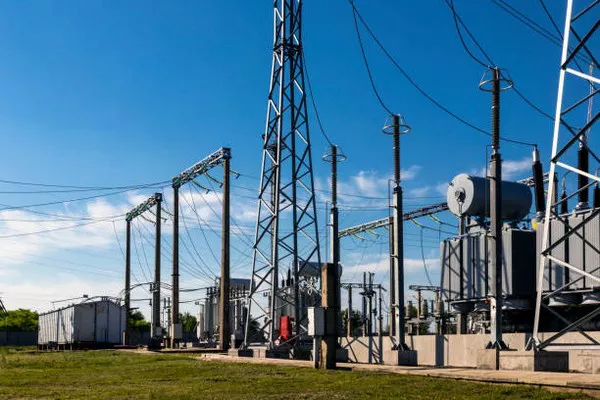Transformer oil plays a critical role in the efficient and safe operation of electrical transformers. Its primary functions include providing electrical insulation, cooling, and suppressing corona discharges within the transformer. Over time, however, transformer oil can degrade due to the presence of contaminants, moisture, and chemical by-products of electrical and thermal stresses. This degradation can compromise the insulation properties and overall performance of the transformer. To mitigate these issues, transformer oil filtration becomes essential. But when exactly is transformer oil filtration required? Let’s delve into the key reasons and benefits of this maintenance practice.
Detecting Contaminants: Why Monitor Transformer Oil Quality?
Why is it important to monitor the quality of transformer oil regularly? Transformer oil is subjected to various environmental and operational conditions that can lead to contamination over time. Contaminants such as moisture, dust, metals, and cellulose fibers can enter the oil during the normal operation of the transformer. Additionally, chemical reactions within the transformer can produce harmful by-products like acids and sludge, further degrading the oil quality. These contaminants and by-products reduce the dielectric strength of the oil, potentially leading to electrical breakdowns and failures. Therefore, routine monitoring of transformer oil quality is crucial to detect the presence of such contaminants and take timely corrective actions.
Regular oil testing through dissolved gas analysis (DGA), water content analysis, and other diagnostic techniques helps in identifying early signs of oil degradation and transformer faults. High levels of certain gases like methane and ethylene in the oil can indicate the presence of hot spots or electrical faults within the transformer. Similarly, an increase in water content can lead to reduced dielectric strength and increased risk of arcing and insulation breakdown. By continuously monitoring these parameters, maintenance personnel can determine when transformer oil filtration is necessary to remove harmful contaminants and restore the oil’s effectiveness.
Signs of Deterioration: When Should Transformer Oil Filtration Be Considered?
What are the signs that indicate the need for transformer oil filtration? One clear indicator is the breakdown of the oil’s dielectric strength, which can be assessed through routine testing. As contaminants accumulate, the dielectric strength of the oil decreases, making it more susceptible to electrical failures. If oil testing reveals a significant decline in dielectric strength or an increase in acidity levels, immediate filtration and purification are recommended to prevent further deterioration and ensure the transformer’s reliability.
Additionally, visual inspections of the transformer and oil can provide valuable insights. If the oil appears cloudy or has visible sedimentation, it likely contains contaminants that need to be removed through filtration. Sedimentation can indicate the presence of sludge or particulate matter that can clog the transformer’s cooling system and impede proper heat dissipation. Furthermore, abnormal operating conditions such as overheating or frequent tripping of protective devices may signal underlying issues that necessitate oil filtration and comprehensive transformer maintenance. By paying attention to these warning signs, maintenance teams can proactively schedule filtration activities to prevent costly downtime and extend the transformer’s lifespan.
Preventive Maintenance: How Does Filtration Enhance Transformer Performance?
How does transformer oil filtration contribute to preventive maintenance? Filtration involves the removal of contaminants and impurities from the transformer oil, restoring its dielectric strength and thermal conductivity. This process not only extends the lifespan of the transformer but also enhances its operational efficiency and reliability. By maintaining clean and high-quality oil, the risk of insulation breakdowns and other electrical faults is significantly reduced.
Regular oil filtration also helps in preserving the transformer’s solid insulation system. Clean oil ensures optimal heat dissipation, preventing hot spots and thermal degradation of insulation materials. Moreover, filtered oil reduces the risk of corrosive sulfur compounds forming within the transformer, which can lead to accelerated aging and mechanical failures. Ultimately, transformer oil filtration is a proactive measure that supports the overall health and performance of the transformer, enabling it to operate reliably under varying load conditions and environmental factors.
Best Practices: Implementing an Effective Filtration Strategy
What constitutes an effective transformer oil filtration strategy? Firstly, establish a comprehensive oil testing and analysis program to monitor the condition of transformer oil regularly. This includes periodic sampling and laboratory analysis to track changes in key parameters such as acidity, moisture content, and dissolved gas levels. Based on the analysis results, develop a proactive maintenance schedule that integrates oil filtration as needed.
When performing oil filtration, choose appropriate methods such as vacuum dehydration, centrifugal separation, or absorption techniques based on the nature and severity of contamination. Collaborate with experienced service providers or utilize in-house expertise to ensure that oil filtration processes adhere to industry standards and transformer manufacturer recommendations. Document all maintenance activities and keep detailed records of oil testing results to track trends and identify potential issues before they escalate.
Lastly, incorporate oil filtration into the overall transformer maintenance plan, which should include routine inspections, electrical testing, and minor repairs. By integrating oil filtration with other maintenance practices, organizations can maximize transformer reliability and minimize the risk of unexpected failures or downtime.
See Also KVA in Transformers: A Comprehensive Guide
In conclusion, transformer oil filtration is a vital aspect of maintaining the reliability and performance of electrical transformers. Regular monitoring of oil quality, coupled with timely filtration and purification, helps mitigate the effects of contamination and extend the lifespan of transformers. By implementing effective oil filtration strategies as part of a comprehensive maintenance program, organizations can optimize transformer performance, reduce operational risks, and ensure the continuous supply of electricity with minimal disruptions.

